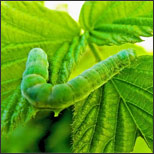How to Identify Garden Pests

Are you wondering what that little critter is on your cabbage?
Would you like help in identifying garden pests?
For most of the country this week, it is going to be perfect gardening weather. If it is perfect weather for you and me, you can bet it is going to be perfect for little critters everywhere.
It is important to know what you are looking for when you’re trying to identify garden pests. Let’s take a look at different pests that could be in your garden and what you can do to help your plants to stand against them.
Cabbage Loopers
These are small critters with quite a vivacious appetite. Believe it or not, but these little guys can cause major damage to your garden. They look like a 2-inch green worm with a white of silvery stripes that appear along their backs.
You will find these pests on cabbage, broccoli, cauliflower, and collard greens.
Would you like to learn more about ridding your garden of these pests? Better Homes and Gardens has a great article for you at, Stop Cabbage Loopers in Your Garden.
Grubs
Have you noticed more raccoons tearing at your lawn? Or no matter how much you water your lawn is your grass still brown?
Well you might have grubs. According to Better Homes and Gardens,
“Grubs are milky white with a brownish head. They typically curl into a “C” shape when disturbed.”
You can read more about how to rid your garden of these pests by reading Stop Grubs in Your Lawn by Better Homes and Gardens.
How to Improve the Health of Your Plants
It is important to note that plants receive adequate water to develop strong roots to thrive. In conditions of drought and little rainfall, plants become dry, stressed and actually attract insect and pests. Henderson Park Community Garden puts it well:
“Sickly plants, much like sickly animals in a wild herd of African antelope, are the first to succumb to predators.”
Nutrition is very important in areas where water use is restricted. A healthy plant will have a strong root system and stem which improves the plant’s defense against diseases and pests. You can ensure that your plants receive adequate water, nutrients and oxygen to develop strong root systems by installing Rootsticks.
What pesky pests are you having trouble with in your garden?



